You can read part 1 of the story by clicking here.
Unlike most concours events, the cars competing in the Pebble Beach Concours and the quality of the judges are among the best in the world. The vehicles are flawless, and the judges do not miss a single detail. This means the process of preparing a car for the lawn at Pebble Beach is much more involved and meticulous. In addition, we are competing in the Virgil Exner Class at Pebble, which consists of one-off cars. Getting our 1957 Chrysler Ghia Super Dart 400 concept car ready for this event is more than just detailing—it’s a comprehensive process of concours preparation.
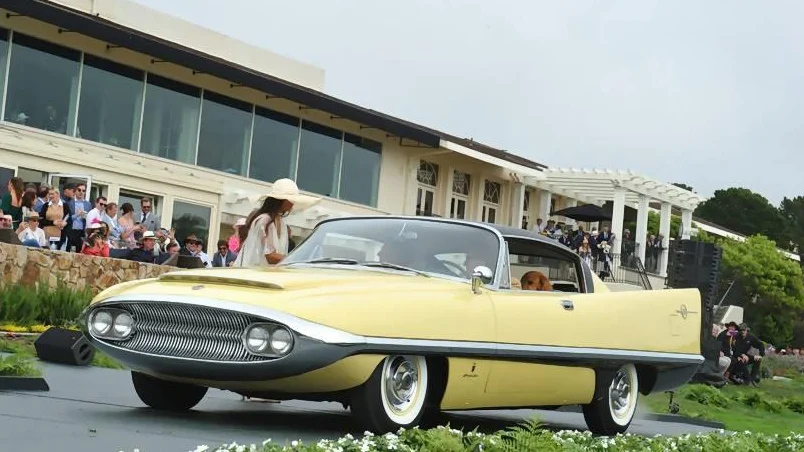
The Super Dart actually was on the lawn at Pebble in 2022, winning in the Preservation Class, so we thought it would be an easy job getting it ready for this year’s Concours. Boy, was I wrong! I set up an appointment with my friend Tim McNair, who is probably the finest concours preparation person in the U.S., and we met at the Maine Classic Car Museum several weeks ago.
The key to concours preparation of a true preservation car like ours is not to try to improve it, but rather to simply preserve what is there and give the car a chance to present as well as possible while leaving all the originality alone. This requires more thought than working on a restored car because, at each step of the process, you have to decide how far to go. You do not want to add anything to the car—just clean everything as much as possible. This is tricky with old finishes and requires expertise not only in terms of the products you use, but also in the technique you demonstrate in using those products. Less-aggressive products are the key, which means that everything you do is slow and methodical. Tim is a master of this, which is why I set up the session with him.
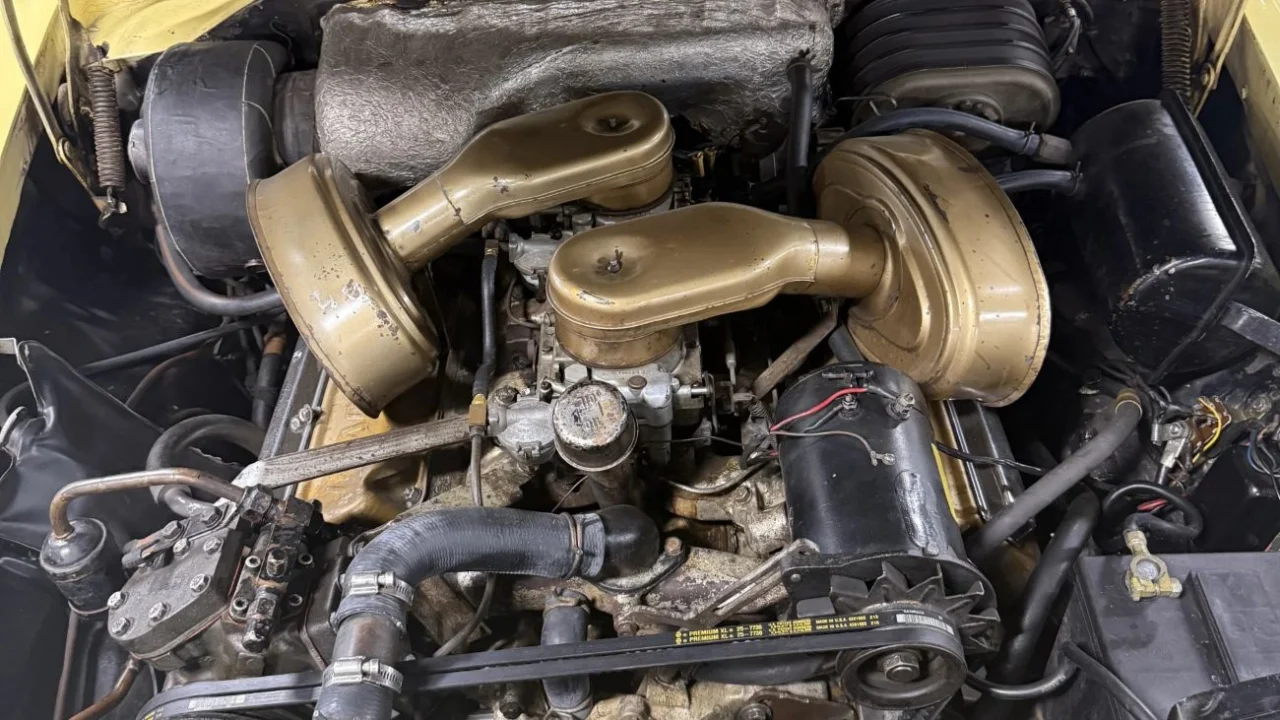
The first thing we did was thoroughly clean every single part of the engine compartment. Again, the goal was not to refinish things, but just to make them as clean as possible on our all-original 67-year-old car. This thorough cleaning resulted in hundreds of small improvements, including an engine compartment that looks as nice as possible. Take a look at the photo below and judge how well we did.
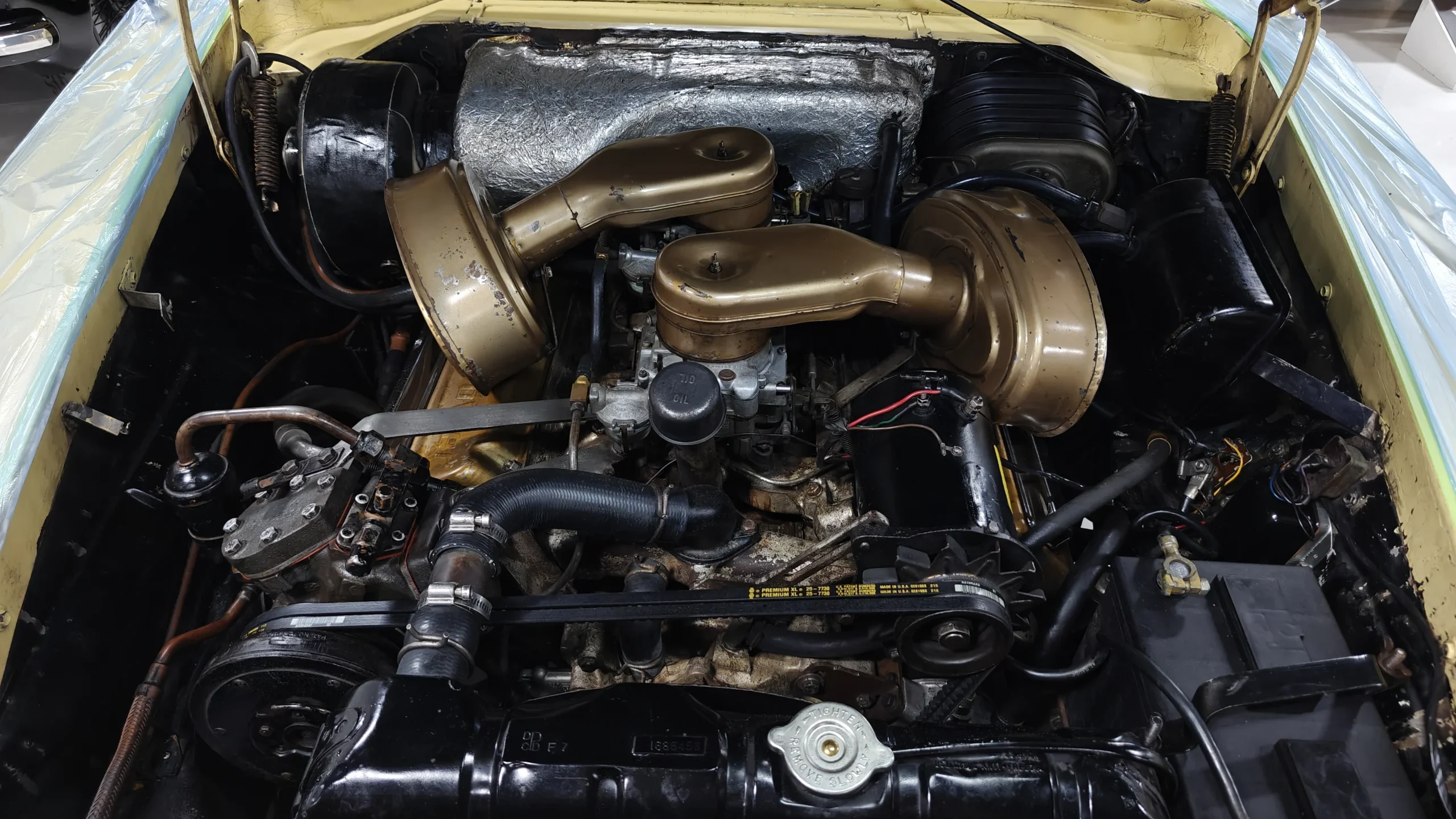
The next thing we did was clean the car’s exterior with plenty of Griot’s Garage Speed Shine, a ceramic quick detailer. This took about an hour . . . and then the real work began.
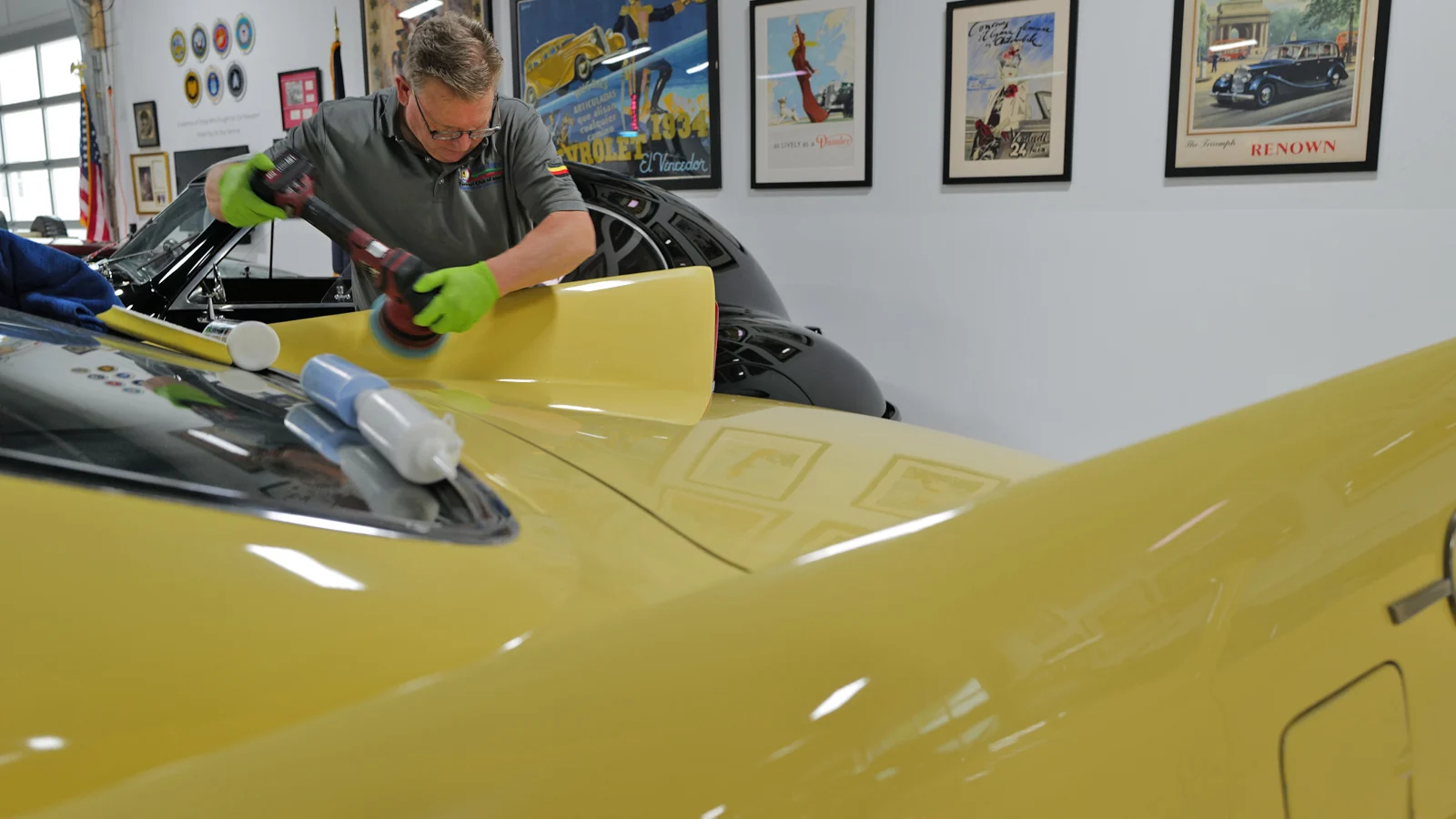
We started on the paintwork, using a number of different products in a number of stages, going from most to least aggressive. This took one entire day. After 12 hours of constant work, we had a car with original paint that was not only clean but also perfectly preserved. The shade of the paint actually darkened a bit after the work was done, with a deeper look than it had at its previous Pebble outing. Thinking we had put in a good day’s work, we went to dinner.
The next day the “dirty work” started: cleaning the chrome and aluminum brightwork, the interior, and finally the leather top.
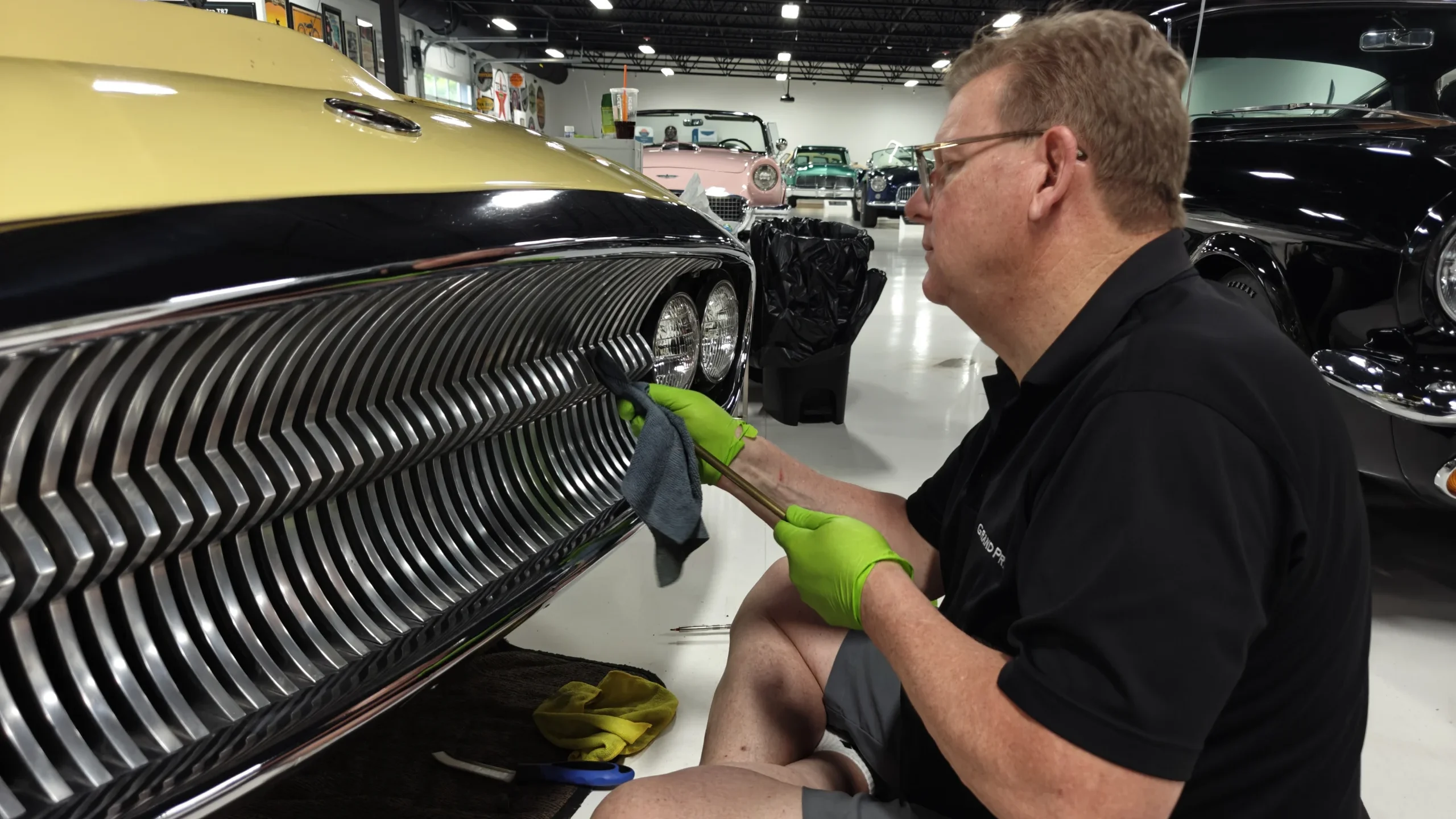
After showing me the proper technique, Tim had me clean the grille. What’s amazing is that, based on his experience, Tim did not think the grille of our Chrysler had been cleaned to concours-level in decades. Before you think that’s not a big deal, consider that the grille of the Super Dart 400 is constructed of a chrome-plated brass surround with 66 individual grille teeth. These pieces were coated in years of old wax and corrosion, and each one took tons of careful time to clean. This job took over four hours alone to complete, plus it was messy. We also needed to be very careful not to damage anything while cleaning, which is why the process is so slow.
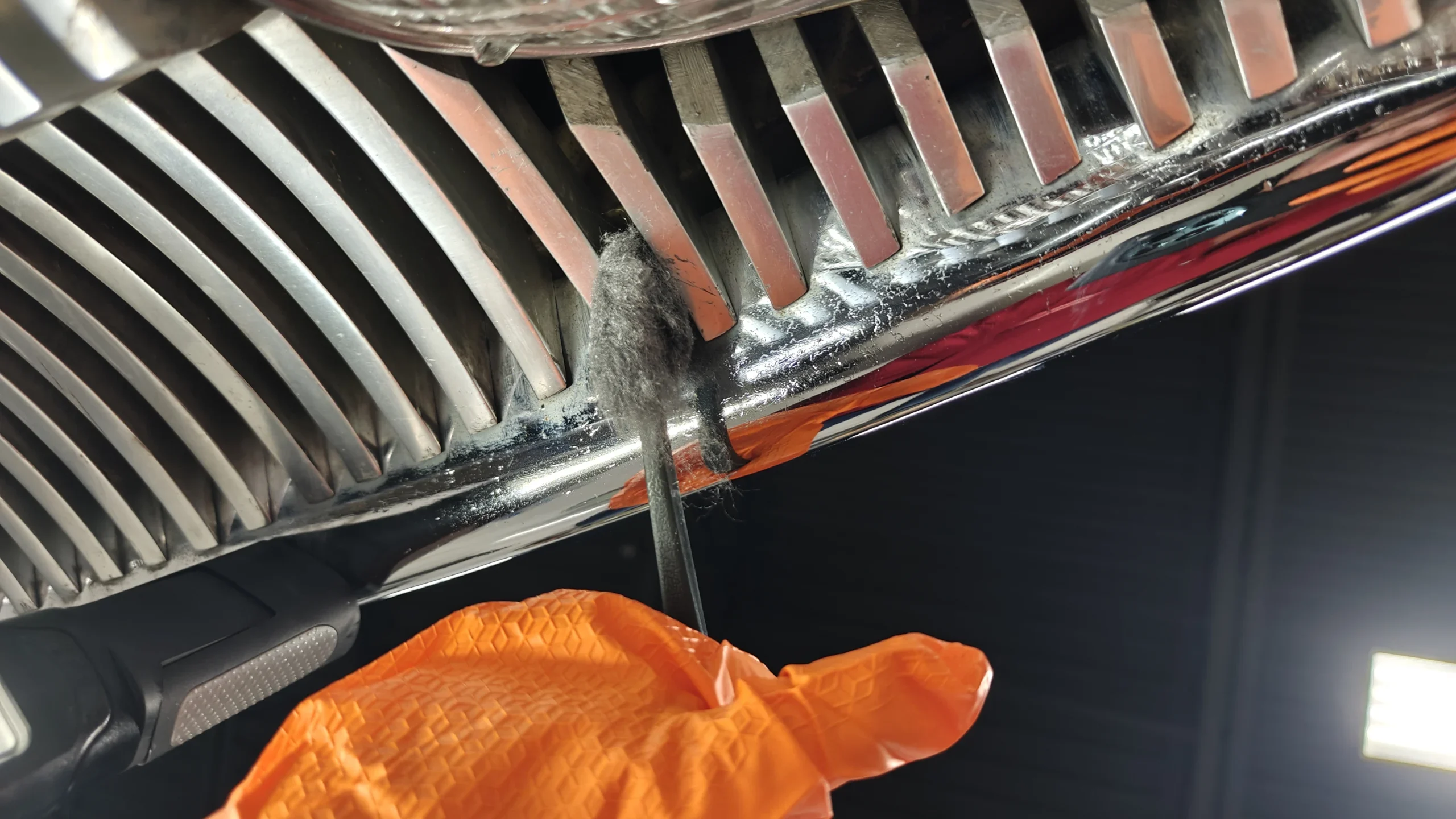
While I was cleaning the grille, Tim worked on the interior. Before he started, it looked to be black and a light Cream color. After four hours of carefully cleaning every part of the interior, from leather to brightwork, the white and black interior it had when new appeared. In addition, the metal bits of the interior now shined like they should.
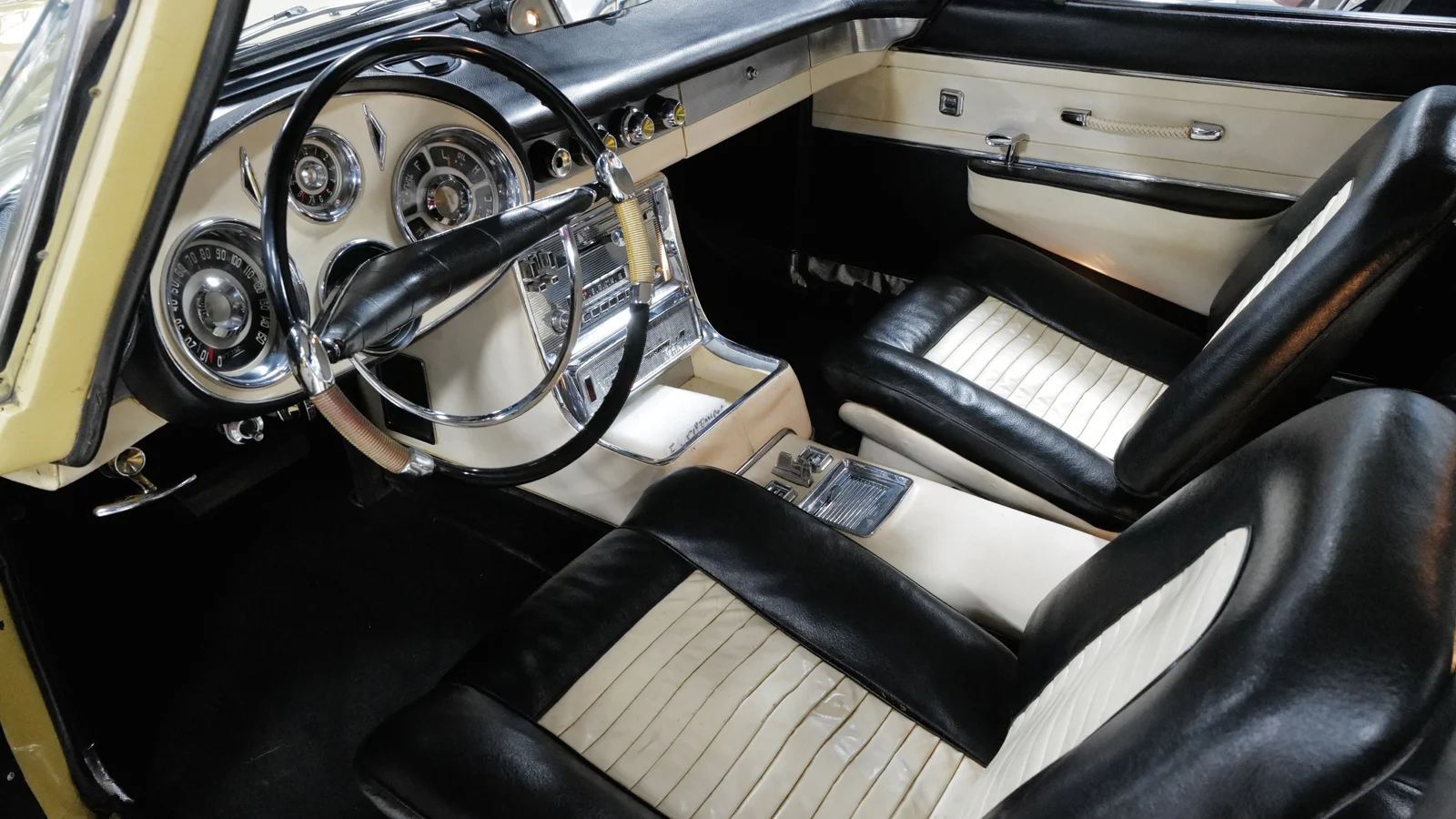
The next job assigned to me, after Tim demonstrated the process, was to disassemble and carefully clean the original hubcaps. After the pain of cleaning the grille, this was much easier and only took about an hour. Again, seemingly small things that improve the entire car.
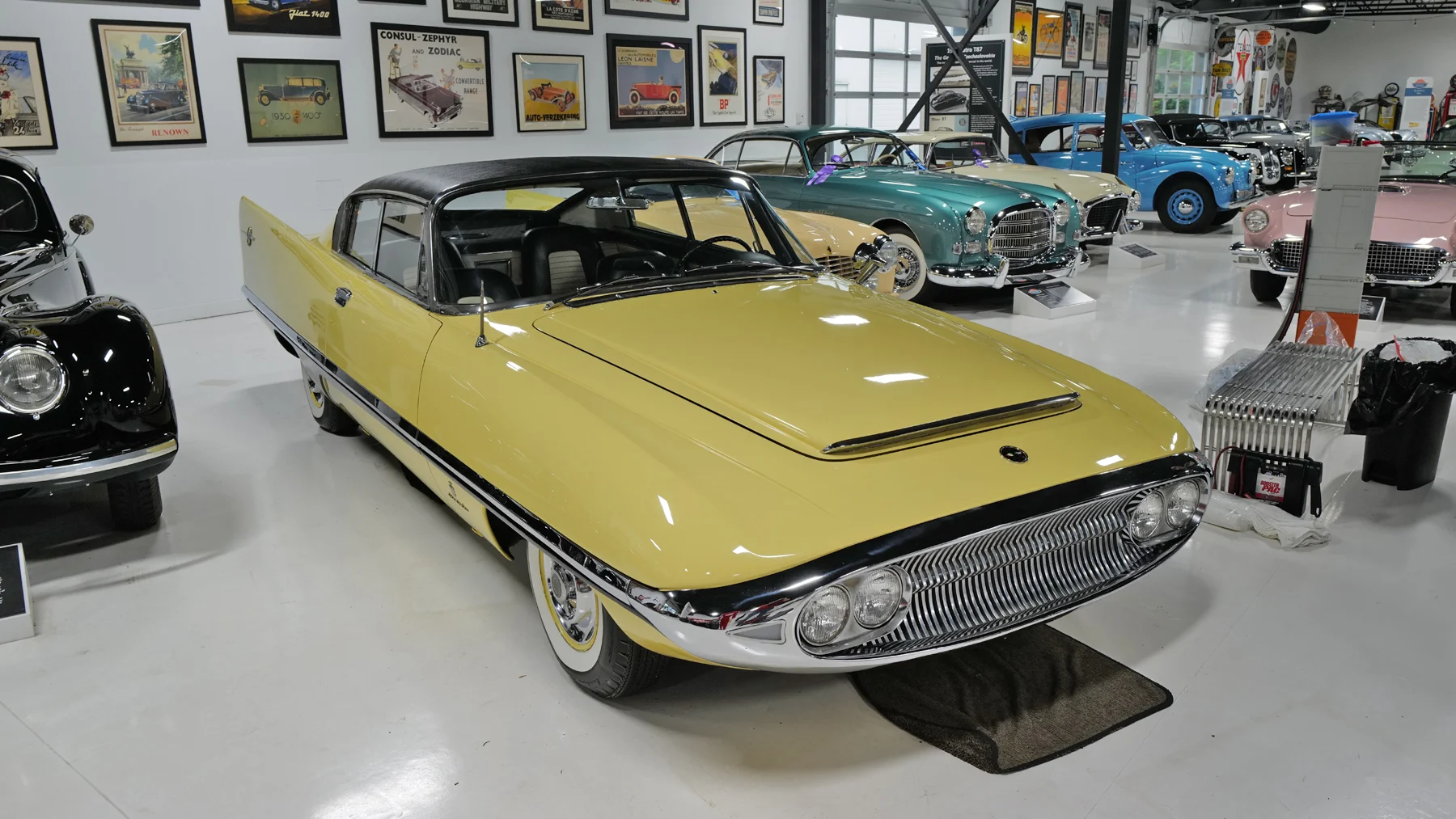
Our final projects were the tires and the car’s leather top. Stupidly assuming the tires would be easy, I cleaned them with Griot’s tire conditioner. They looked perfect, and I thought I was done. About 10 minutes later, after finishing the second tire, I looked at the first and discovered the white gunk I had cleaned out of all the nooks on the sidewall was back. I went back to the first tire and started again, this time using a small brush with the tire conditioner. Everything finally looked good, and I went on to the second tire. After that was done, I felt I was finally making progress until I returned to the first tire again—the white film was back. Tim explained what was happening is called mold release. Tire mold release is the chemical used when tires are made to prevent them from sticking to their molds. It can get into the rubber itself and then creep back out.
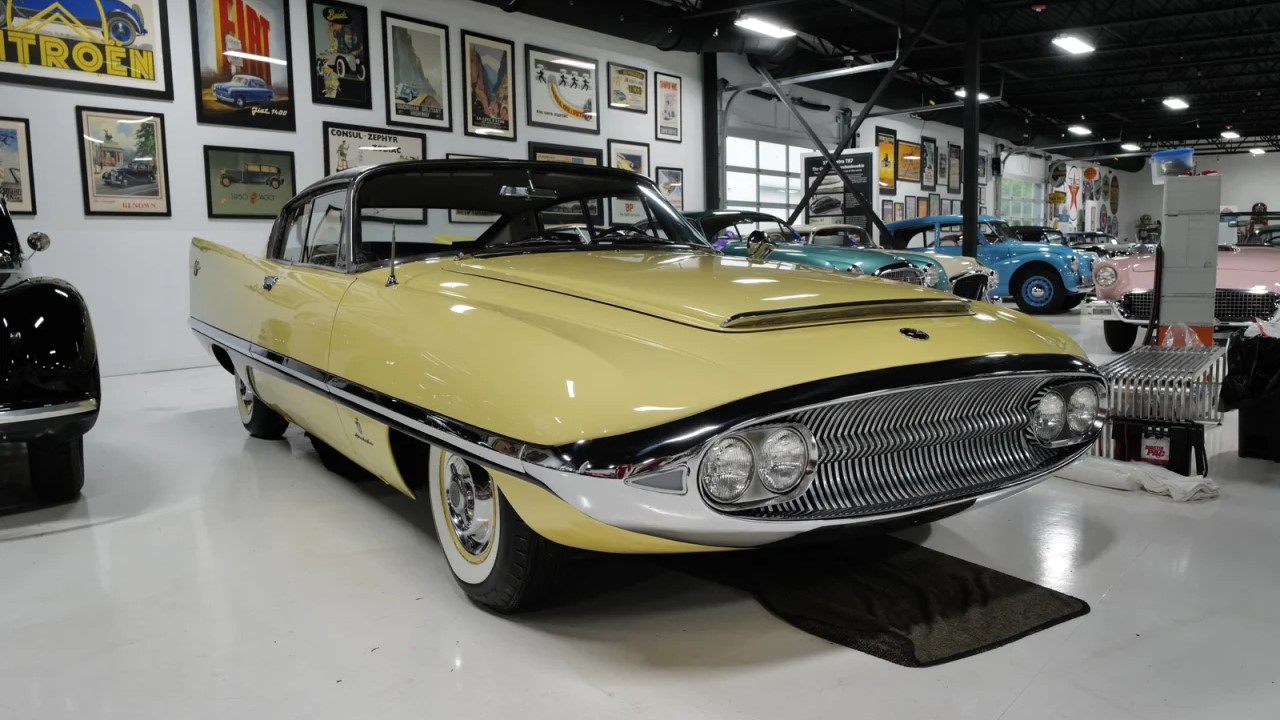
The solution was a different and very messy product. I slowly and carefully used this on the tires, being careful not to get any on the paint, as it would require going back over that part of the car. After about 90 minutes, the tires looked clean but not shiny, which was okay. Again, the goal is not to make the car look like a fresh restoration—preservation cars should not have a shiny finish.
Conditioning the Super Dart’s leather top was the easiest job of the bunch. This only required a quick cleaning and conditioning, again using a product that made it look nice but not brand-new.

The final tally of man-hours spent for the two of us was around 52, but we now had a car ready for the lawn at Pebble Beach. Also of note: we checked every single system of the car and, after replacing a pair of headlights, had a vehicle that was not only clean but also functioned as it is supposed to—something very important at Pebble Beach, where a half a point can be the difference between getting an award and missing out on one.
Next up, I need to fill the fuel tank with 15 gallons of ethanol-free fuel, replace an incorrect hose clamp, acquire a new vintage-style battery appropriate for the car, and get it on a trailer. That will be covered in the next installment.
Please say hello to us on the show field at Pebble if you are there! I will be with our 1957 Chrysler Ghia Super Dart 400 concept car all day and will be happy to answer any questions after judging is complete.

